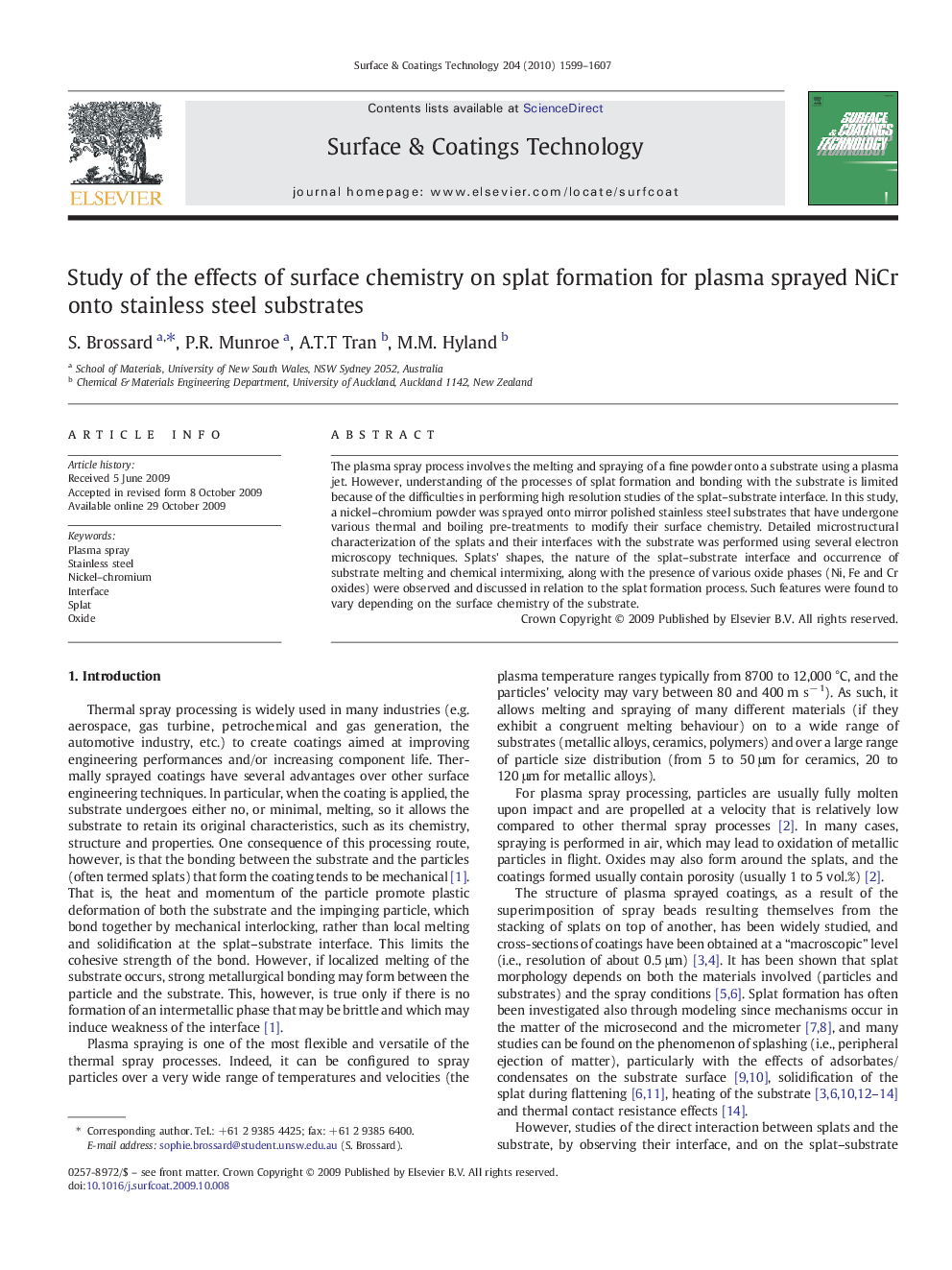| Article ID | Journal | Published Year | Pages | File Type |
|---|---|---|---|---|
| 1659762 | Surface and Coatings Technology | 2010 | 9 Pages |
The plasma spray process involves the melting and spraying of a fine powder onto a substrate using a plasma jet. However, understanding of the processes of splat formation and bonding with the substrate is limited because of the difficulties in performing high resolution studies of the splat–substrate interface. In this study, a nickel–chromium powder was sprayed onto mirror polished stainless steel substrates that have undergone various thermal and boiling pre-treatments to modify their surface chemistry. Detailed microstructural characterization of the splats and their interfaces with the substrate was performed using several electron microscopy techniques. Splats' shapes, the nature of the splat–substrate interface and occurrence of substrate melting and chemical intermixing, along with the presence of various oxide phases (Ni, Fe and Cr oxides) were observed and discussed in relation to the splat formation process. Such features were found to vary depending on the surface chemistry of the substrate.
